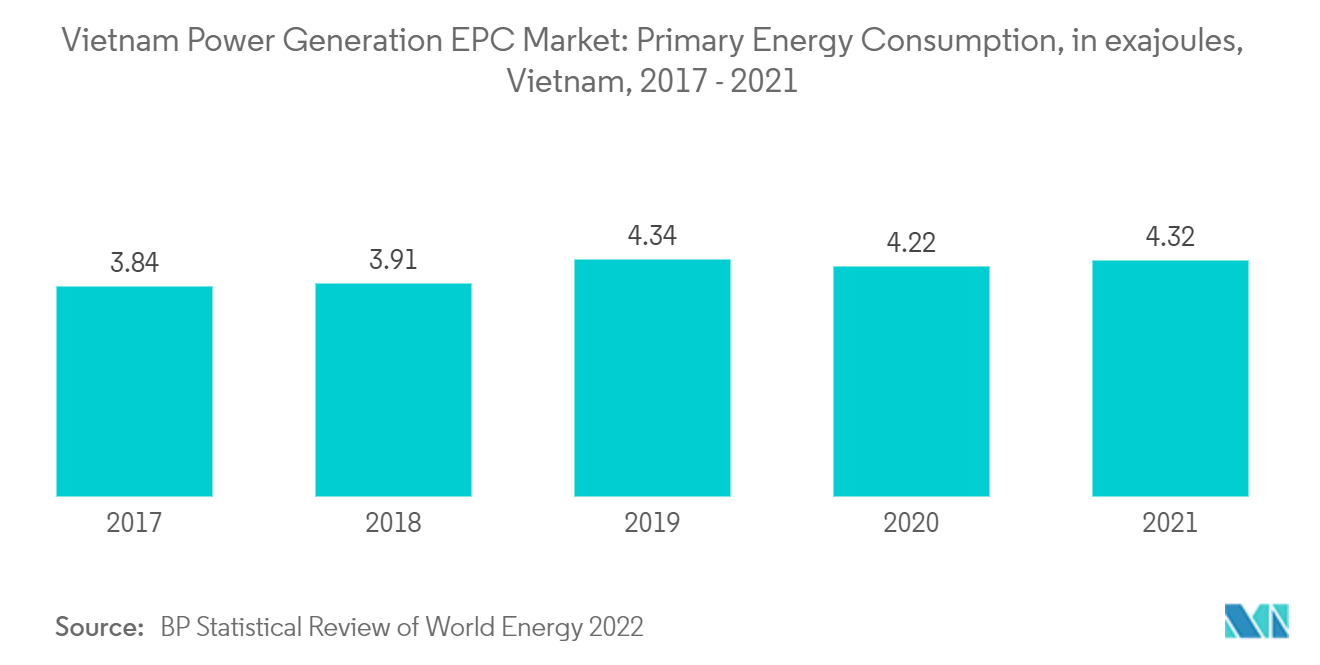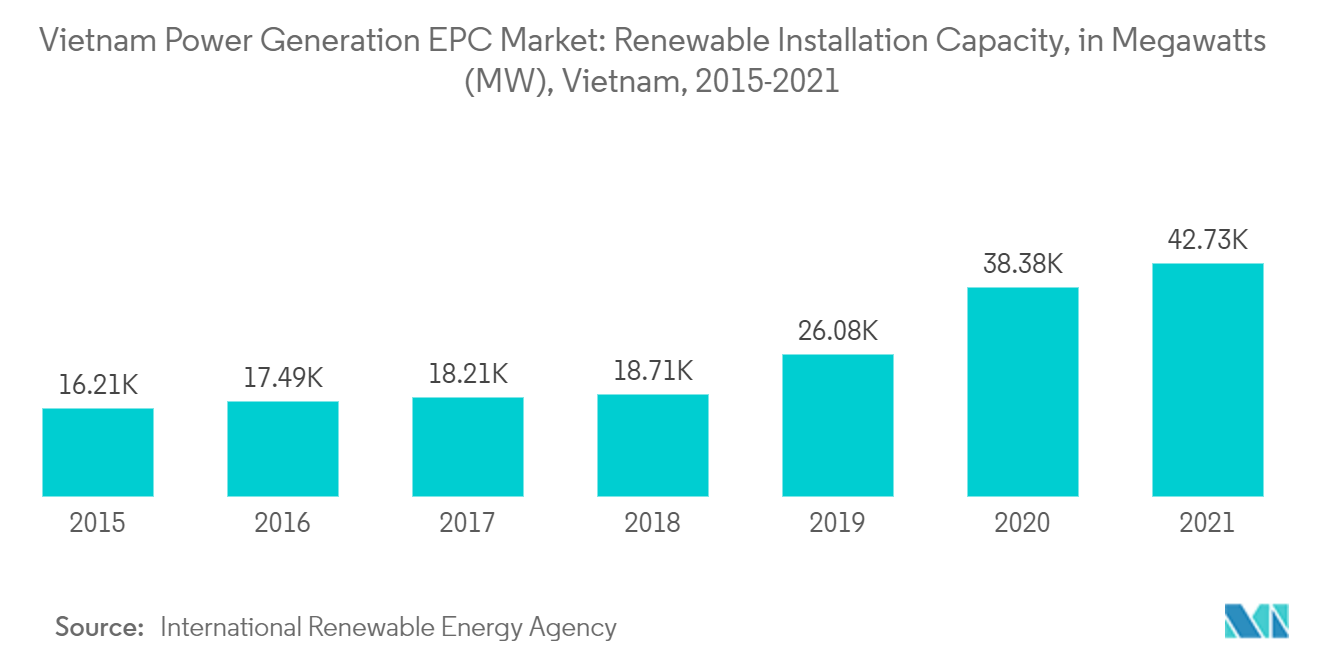Market Trends of Vietnam Power Generation EPC Industry
This section covers the major market trends shaping the Vietnam Power Generation EPC Market according to our research experts:
Thermal Expected to Dominate the Market
- Thermal power is generated through various sources such as coal, natural gas, nuclear, and oil. In the case of Vietnam, out of the above-mentioned sources, only three are being used, i.e., coal, natural gas, and oil.
- In 2021, approximately 4.3 exajoules of primary energy were consumed in Vietnam. In the same year, the primary energy consumption in the Asia-Pacific region amounted to 273 exajoules.
- Vietnam is also dependent on coal power plants. In the past decade, the country heavily invested in coal power plants to meet its power demand. In February 2021, the Ministry of Industry and Trade of Vietnam (MOIT) released the national power development plan 9 (PDP8), where the country plans to add 37 gigawatts of coal-fired power plants by 2030.
- As of 2022, the Quang Trach 1 Coal-fired Power Plant was under construction in Vietnam with a capacity of 1.2 gigawatts, with an estimated plant investment of EUR 1.2 billion. The project is expected to be commissioned by 2025 and generate up to 8.4 billion kilowatt-hours of electricity per year.
- In March 2022, Samsung C&T and Lilama secured an engineering, procurement, and construction (EPC) contract worth VND 24.14 billion (USD1.04 billion) from PetroVietnam Power for the 1.5GW Nhon Trach 3&4 power plant in Vietnam. The project is expected to be commissioned during the 2023-2024 period. Nhon Trach 3&4 is Vietnam's first liquefied natural gas (LNG) fueled power plant.
- Therefore, owing to such factors, the conventional thermal segment is likely to dominate the Vietnamese power generation EPC market during the forecast period.

Increasing Renewable Energy Expected to Drive the Market
- In 2021, the total renewable energy generation plant installed capacity in the country was 42,727 megawatts (MW), which was higher than the installation capacity of 2020, i.e., 38,379 megawatts (MW). Renewable energy in the country includes hydro, solar, wind, and bio-energy.
- Currently, hydro energy is the largest source of renewable energy in the country, followed by solar energy, which saw a record installation of approximately 21,582 megawatts (MW) by the end of 2021.
- In July 2022, NovaWind, ROSATOM's wind power division, and An Xuan Energy signed a cooperation agreement to build a Vietnamese wind farm. This agreement envisages a partnership for constructing a 128 MW wind farm in Son La Province, north-western Vietnam.
- In addition, the country is focusing on renewable energy to achieve net zero carbon emission and reduce reliance on coal imports. Under the PDP8, the country plans to construct 19-20 GW of solar energy and 18-19 GW of wind energy. For example, in 2022, Vietnam's government authorities approved the construction of two floating solar projects on the Khe Go and Vuc Mau lakes with a total capacity of 450 MW. Both are expected to be commissioned by the end of December 2023 and cost USD 340 billion.
- Hence, owing to such factors and increasing renewable energy, the Vietnamese power generation EPC market is expected to grow further during the forecast period.


